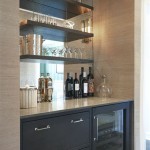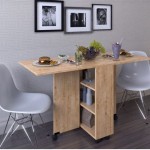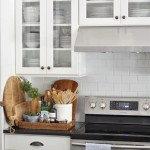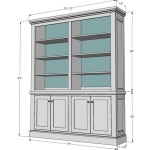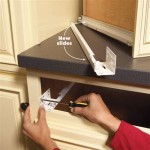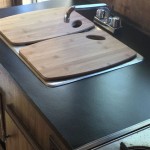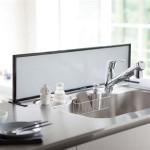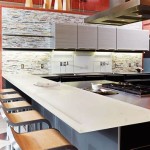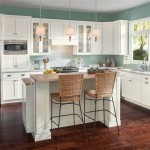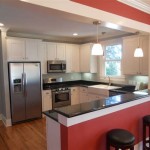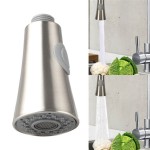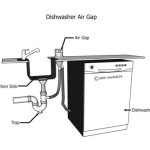What Is the Standard Size of a Kitchen Counter?
The kitchen counter, often referred to as a countertop, plays a crucial role in the functionality and aesthetics of a kitchen space. Its dimensions can significantly impact the layout, workflow, and overall design of the kitchen. To ensure optimal functionality and a pleasing appearance, it's essential to understand the standard size of a kitchen counter.
Standard Kitchen Counter Dimensions
Typically, kitchen counters come in standard sizes that have been established over the years based on ergonomic principles and practical considerations. These standard dimensions provide a comfortable and efficient workspace for various kitchen tasks.
Width
The standard width of a kitchen counter is usually between 24 and 36 inches (61 to 91 centimeters). This range allows for ample workspace while accommodating other kitchen elements, such as appliances and cabinets. A wider counter, such as one measuring 36 inches, is suitable for larger kitchens or areas where multiple people work simultaneously.
Depth
Standard kitchen counters typically have a depth ranging from 24 to 25 inches (61 to 63 centimeters). This depth provides sufficient space for food preparation, serving, and placing small appliances without making the counter feel cramped.
Height
The standard height of a kitchen counter is typically between 36 and 38 inches (91 to 96 centimeters) from the floor. This height allows for comfortable standing and working at the counter, promoting good posture and reducing strain on the back and shoulders.
Countertop Overhangs
In addition to the standard dimensions, kitchen counters often feature overhangs, which are extensions of the countertop beyond the base cabinets. Overhangs serve both functional and aesthetic purposes.
Functionally, overhangs can provide additional workspace for tasks like eating, food preparation, or serving. They also create a visual separation between the counter and the cabinets, adding depth and dimension to the kitchen design.
The standard overhang for a kitchen counter is typically around 12 inches (30 centimeters). However, this can vary based on personal preferences, kitchen layout, and the intended use of the overhang.
Seating Arrangements
When considering the size of your kitchen counter, it's important to think about potential seating arrangements, especially if you plan to incorporate a breakfast bar or kitchen island.
For comfortable seating, a minimum of 24 inches (61 centimeters) of overhang is recommended to allow for legroom and avoid bumping into the cabinet base. For more spacious and comfortable seating, consider an overhang of 30 inches (76 centimeters) or more.
Factors Influencing Kitchen Counter Dimensions
Several factors can influence the dimensions of kitchen counters in specific cases.
- Kitchen Size: In smaller kitchens, narrower counters may be necessary to optimize space utilization.
- Appliances: The placement of appliances, such as dishwashers and ovens, might affect the available space for countertops.
- Kitchen Layout: The overall layout of the kitchen, including the location of windows, doorways, and cabinets, can impact the size and placement of countertops.
- Personal Preferences: Ultimately, personal preferences play a role in determining the size and style of kitchen counters. Some individuals may prefer wider or taller counters, while others might prioritize specific features or aesthetics.
It's important to consult with kitchen designers or contractors to determine the most suitable dimensions for your kitchen counter based on your specific needs, preferences, and kitchen layout.
Now that you have a better understanding of standard kitchen counter sizes and factors influencing them, you can make informed decisions when designing or renovating your kitchen. Remember to consider your personal preferences, kitchen layout, and intended use of the counter to create a functional and aesthetically pleasing workspace that meets your needs.

Standard Kitchen Counter Depth Hunker Cabinet Dimensions Cabinets Height Island

Kitchen And Dining Area Measurements Standards Guide

What Are The Perfect Kitchen Dimensions Amp Standard Size

N Standard Kitchen Dimensions Renomart

Kitchen Unit Sizes Cabinets Measurements Cabinet Dimensions Height

Your Kitchen Renovation Measured For Perfection Rona

Image Result For Standard Kitchen Cabinet Dimensions Cm Cabinets Height Measurements

Kitchen Cabinet Sizes What Are Standard Dimensions Of Cabinets

N Standard Kitchen Dimensions Renomart

Kitchen Standard Dimensions Essential Measurements
Related Posts

